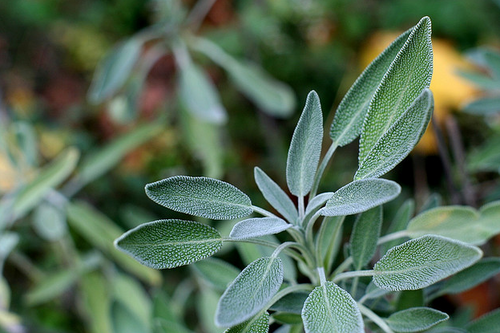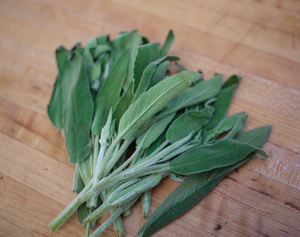
Sage (Salvia officinalis) is a hardy perennial sub-shrub used as a herb. Hundreds of varieties of sage exist and it might be said that this is the most popular of the culinary herbs. Sage has a woody stem structure and the leaves are a long oval shape, often with a grey tinge. It spreads quickly and requires regular pruning to keep it in good shape.
Sage can flower in the right climate, although flowering eludes some growers in cooler climates. When it does flower, it will produce small pale blue, pink or lilac coloured flowers. Flowers will occur in midsummer, on long curving clusters.
When growing, sage can send out a slight aroma of camphor, a pleasant smell in the breeze of a warm day. Bees love sage and can be used to attract them to the garden.
Used as a culinary herb since the Middle Ages, sage has an even longer pedigree as a medical and spiritual herb, including as a fertility help for the Ancient Egyptians.
Growing sage
- Grow sage from seed, seedlings or cuttings. Be aware that seeds can take a very long time to germinate, so seedlings and cuttings are a better choice. Plant in the spring for seeds and in summer from cuttings (keep cuttings under cover). Sage transplants well.
- If planting in a cooler climate, do not plant out seedlings until the last of the frosts is over.
- Choose well-drained soil in a sunny position. Sage doesn't like having wet roots.
- Keep plants about 40cm (16 inches) apart. Give it plenty of growing room as it will crowd out other plants and kill them.
- Keep the soil well hoed and weeded. Sage doesn't like competition. Renew the bed every four to five years.
- Keep sage well pruned to remove the scraggly growth typical of this plant. This will improve flavour of the remaining leaves.
Sage can grow to a height of 60cm or 24 inches.
Problems for sage
Keep an eye out for powdery mildew in very hot weather.
Preserving sage
Dry very slowly, at a low temperature.
Using sage for culinary purposes

Sage is a popular culinary herb. It is best picked just before using. Some of the uses include:
- British cuisine.
- Mediterranean cuisine.
- Pork, duck and eel dishes.
- Cheese dishes.
- Add to stuffings with onion (sage and onion stuffing is a well known version).
- Tomato dishes.
- Add to bouquet garni.
Pineapple sage
Pineapple sage has red flowers and leaves that smell of pineapple. It is not considered useful for culinary purposes but is pretty to grow and nice to smell.
Medicinal and household use of sage
Sage has a few medicinal and household uses, including:
- Make into a tea for relaxation.
- Use as an astringent to cleanse and tone oily skin.
- Add to a tea to make a dark hair dye.
- Use as an antiseptic.
- Use for its anti-inflammatory properties.
- Make sage tea to soothe sore throats and coughs.
- Use as a mouthwash to treat sore gums.
- Use to relieve an upset stomach or indigestion.
Note! Do not consume sage in excess or over a prolonged period, it can be harmful. Pregnant women should not consume sage medicinally. Avoid if you have epilepsy. (Rachel Corby, The Medicine Garden, p. 40, (2009))